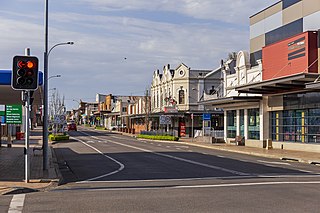
Cessnock is a city in the Hunter Valley of New South Wales, Australia, about 52 km (32 mi) by road west of Newcastle. It is the administrative centre of the City of Cessnock LGA and was named after an 1826 grant of land called Cessnock Estate, which was owned by John Campbell. The local area was once known as "The Coalfields", and it is the gateway city to the vineyards of the Hunter Valley, which includes Pokolbin, Mount View, Lovedale, Broke, Rothbury, and Branxton.
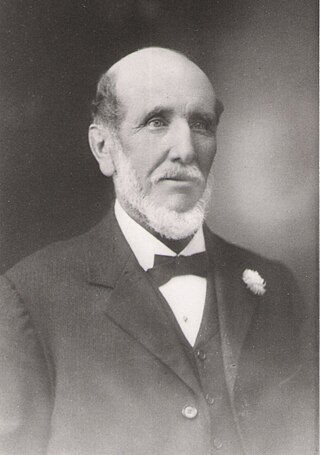
John Scholey was an extensive landed proprietor, prominent businessman, colliery owner, Director of Aberdare Collieries, and a Mayor. He was a Justice of the Peace and member of the Newcastle Land Board, a division of the New South Wales Justice Department.

Kurri Kurri is a small town in the Hunter Region of New South Wales, Australia, in the Cessnock LGA. At the 2016 census, its population was 6,044. Kurri Kurri is the largest town in a group of towns and hamlets, including Stanford Merthyr, Pelaw Main, Weston, Abermain and Heddon Greta, called Kurri Kurri – Weston by the ABS. Its estimated population was 17,241 at 2016 census.

Abernethy is a small town in the City of Cessnock, in the Hunter Region in the state of New South Wales, Australia. Abernethy is located 8 kilometres south-east of the town of Cessnock, NSW and is adjacent to Werakata National Park and the Aberdare State Forest. The town was founded near a coal mine and some of the historic buildings remain. In 2016 348 lived there with the median age being 32 and 74.8% being born in Australia.

Newcastle bus routes connect suburbs in and around Newcastle and Lake Macquarie, about 100 kilometres north of Sydney.
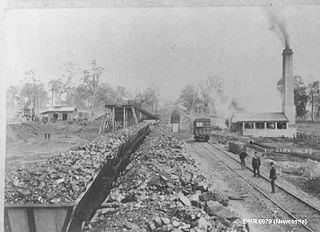
The South Maitland Railway was once an extensive network of privately owned colliery and passenger railway lines which served the South Maitland coalfields in the Hunter Region of New South Wales, Australia and were the second last system in Australia to use steam haulage, having used steam locomotives until 1983.

The Richmond Vale Railway was a 4 ft 8+1⁄2 in colliery railway line in the Hunter Valley of New South Wales, Australia, servicing coal mines at Minmi, Stockrington, Pelaw Main and Richmond Main. It was over 26 km (16 mi) long and passed through three tunnels, and was the last commercially operated railway in Australia to use steam locomotives.
Cockle Creek Power Station was located in Teralba, New South Wales, Australia, on the banks of Cockle Creek. The power stationed operated from 11 March 1927 until March 1976.
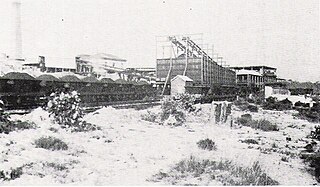
Pelaw Main is a hamlet a few kilometres south-west of Kurri Kurri, in the Hunter Region of New South Wales, Australia. It owes its origins entirely to the colliery there of the same name. It had a population of 1,027 in 2011
George Henry Neilly was an Australian politician. He was a member of the New South Wales Parliament from 1954 to 1977. He was a member of the Labor Party (ALP).
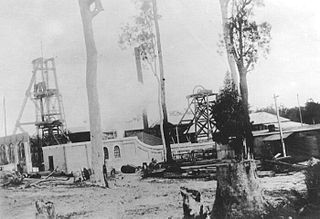
Kitchener is a small town in the City of Cessnock, in the Hunter Region in the state of New South Wales, Australia. Kitchener is located 5 kilometres south of the town of Cessnock, NSW and is adjacent to Werakata National Park and the Aberdare State Forest.

The Richmond Vale Railway Museum operates a railway and museum located at the heritage-listed Richmond Main Colliery south of Kurri Kurri, New South Wales. The museum is a volunteer non-profit organization, formed in 1979 with the aim of preserving the Richmond Vale railway line and the mining heritage of J & A Brown and the Hunter Valley.

Gillieston Heights is a suburb of the City of Maitland local government area in the Hunter Region of New South Wales, Australia, approximately 5.1 km (3.2 mi) from the Maitland CBD. Prior to 1967, the village was named East Greta however this was changed to honour former Maitland mayor and member of the New South Wales Legislative Assembly John Gillies following a poll of residents. At the 2021 census, Gillieston Heights had a population of 4,796.
J & A Brown was a privately owned Australian coal family firm founded by James Brown (1816–1894) and Alexander Brown (1827–1877).
Cliftleigh is a small suburb, and planned development in the City of Cessnock, New South Wales, Australia. It is 27.8 kilometres (17 mi) north-west from Newcastle, and 17 kilometres (11 mi) east-northeast from Cessnock.
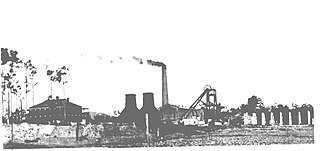
Richmond Main Colliery is a heritage-listed former coal mine and now open-air museum at South Maitland Coalfields, Kurri Kurri, New South Wales, Australia. It was designed by the staff at J & A Brown's Engineering Workshops at Hexham under the direction of John Brown and built from 1908 to 1913 by J & A Brown. The site now operates as the Richmond Main Heritage Park, including the Richmond Vale Railway Museum and Richmond Main Mining Museum. The property is owned by Cessnock City Council. It was added to the New South Wales State Heritage Register on 2 April 1999.
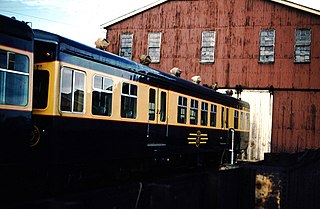
South Maitland Railway Workshops is a heritage-listed former railway workshops and now museum and industrial site at Junction Street, Telarah, New South Wales, Australia. It was added to the New South Wales State Heritage Register on 2 April 1999.
Kearsley is a village in the City of Cessnock, in the Hunter Region of New South Wales, Australia. Kearsley is located 5.7 kilometres south-east of the town of Cessnock, NSW and is adjacent to Werakata National Park. The village was named after William Kearsley, a prominent member of the New South Wales Legislative Assembly and official in the miner's union.
The Hill End Colliery fire was an underground coal-seam fire. it burned from, at latest, August 1930 to at least early 1945, and most probably as late as June 1949. The impact of the fire was magnified by its close proximity to the mining town of Cessnock, New South Wales, Australia. The worst and most spectacular outbreak of the fire occurred on 8, 9 and 10 March 1933.













